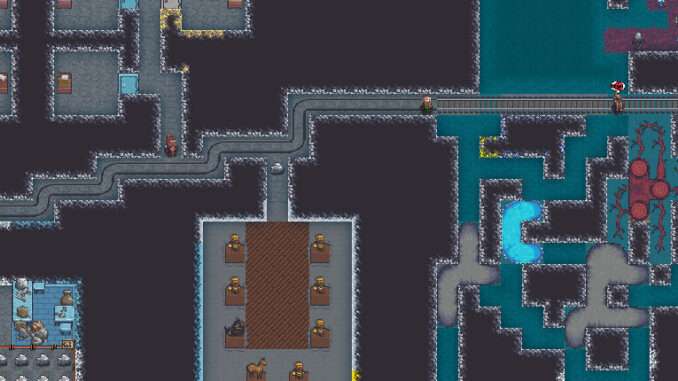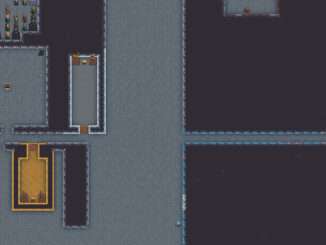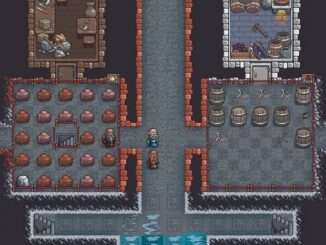
A short but thorough guide on improving the basic provisions and tools brought with the initial embark’s wagon. If you just want to see the product and get embarking check “The Results” section.
Guide on Improving the Basic Provisions and Tools
Who It’s For
This guide is for all of the new players looking at the Prepare Carefully embark options and asking themselves “Do I need all this? What do I take off this list? What do I add to this list?”
This guide isn’t intended for those hardy individuals choosing to embarking on a frozen glacier with no resources in sight, it’s aimed at players who chose a fairly normal embark in a typical temperate-ish climate with a standard variety of metals, at least moderate woodland / vegetation, and calm or average savagery non-evil biome. Normal, vanilla, get-your-dwarven-toes-wet forts. Once you’ve got a grasp on what’s going on, then you can start getting fancy. Whatever else you choose for your embark, if nothing else, make sure there is no aquifer. They’re an unreasonable burden for a new player to deal with, and even veterans dutifully respect the awesome dig-stopping, fort-drowning power of the aquifer layers.
“Normal / Easy” Embark location:
- On the ‘Find Embark Location’ finder menu:
- Savagery – not Untamed Wilds (high savagery)
- Spirit – not Evil or Terrifying
- Temperature – not Hot or Freezing, seriously, your dwarves literally melt like candles
- no Aquifers
- Flux Stone Layer: yes
- Soil: <= ‘Some’ or ‘Deep’
- Forest on several embark map tiles, ‘Woodland’ or ‘Heavily Forested’, ‘Sparse’ may be workable if careful
- Other Vegetation: Moderate or Thick
- no Aquifers
- Iron, Copper, Silver metals at bare minimum, others as desired
- Flux Stone Layer
- Neighbors: hopefully all 3 trading races are available and within distance; if you want to be attacked by goblins you need to be in range of goblins to be attacked by.
The Default
The default embark profile contains a lot of critical items that will keep your fort running for a fair while, but for most ‘normal’ fortress sites there’s a LOT of waste in that list. Here’s the full normal embark list:
- 2 Copper picks
- 2 Copper battle axes
- 1 Iron anvil (or steel anvil if your home civilization has no access to iron)
- 1 Wheelbarrow (if possible)
- 1 Stepladder
- 60 units dwarven alcohol (at least 20 each of up to 3 random types, in 12 barrels)
- 6 bags containing 5 seeds, 1 bag of each of dwarven crop
- 15 units of meat (one random type, 3 stacks of 5 units in 1 barrel)
- 15 units of fish (one random type, 3 stacks of 5 units in 1 barrel)
- 15 units of plump helmets (3 stacks of 5 units in 1 barrel)
- 5 pig tail fiber thread
- 5 pig tail fiber cloth
- 5 pig tail fiber bags
- 3 pig tail fiber ropes
- 3 leather quivers
- 3 wooden buckets
- 3 wooden splints
- 3 wooden crutches
- 2 female dogs *
- 2 female cats *
- 2 random of horse, yak, or water buffalo
- The Wagon, built from 3 wood logs
Some Changes
Wooden items are low value but lightweight and extremely quick to produce, and generally plentiful, unless you’ve chosen to punish yourself with a desert, mountain, tundra or glacier embark. Any wooden items in the list can be dropped and made rapidly on-site. Even in woodless embarks, just take 25 logs instead of 1x 50pt Stepladder.
Pig tail fiber is twice as expensive as regular cave spider silk, you can replace the entire pig tail fiber package with 10 spider silk cloth and 5 silk thread and save over half the cost. Having some thread is important so the Doctor (with suturing skill) can do their job of sewing dwarven meat back together, while cloth is also used for the well’s rope as well as any extra bags you may need.
Quivers are twice as expensive as a piece of leather, instead take 6 cheap leather for equivalent cost of the 3 quivers and make one quiver for your hunter on-site. Leather is difficult to farm efficiently, you will end up ordering most of your supply from the trade liason, but to start your fort you only need a few bits.
1 of the copper axes can be dropped, you don’t need two woodcutters. You *will* want the second pick though, and check to make sure your Anvil is made of Iron, not the triple-cost steel. These copper tools are better desperation weapons than fists, but worse than literally anything else you can make.
Seeds you can purchase at embark are only for the 6 dwarven underground crops. I double each seed type to 10 each to prevent bottlenecking. The skill of your Planter / Grower determines how many items you get per plot, and at the beginning in poor soil, you may not get a lot of yields and thus not many seeds. To get the seeds out of your grown vegetables you need to brew, process or mill them or let them be eaten, but importantly cooking will not give you seeds; time consuming in all cases. More starting seeds means the next season’s crops can be planted before the current ones are harvested, transported, milled, and seeds recollected.
Booze and food – Bring more Plump Helmets, I settle on 21 for 3 per dwarf; they are the backbone of dwarven (myco)agriculture. Get a few cheap barrels by adjusting your booze – you get a free barrel after every 5th unit, so breakpoints at 11 / 16 / 21 drinks give you high value. Food is cheap and also comes with a free barrel for each species, trade in the 15 meat and 15 fish for 7 stacks of 10 different animals of meat. The extra food gives you a lot of extra time to set up your farms and properly equip a hunter.
Animals – they’re on their own tab. Your wagon automagically has two grazer pack animals, but using this Prepare Carefully method removes the cats and dogs so we have to add those back in. They are important working members of your fort, not just floof for your socially anxious dwarves. Cats hunt down vermin which otherwise will congregate around your food stockpiles, eating your food and causing unpleasant thoughts to passers-by. Dogs are serviceable war and hunting beasts, distracting foes and keeping dwarves safe, and are frequently employed as fort sentries, chained within distance of the fort entrance to keep the front pathway thoroughly observed to spot any stealthy ambushers or thieves. A breeding pair of each will, several years on, produce some useful bodies as the fort grows. Chickens, turkeys and other egg-laying birds, while finecky, can produce a lot of basically free eggs if you build them Nest Boxes, consider a pair. Milk-bearing and wool-bearing animals can be purchased too but are much, much more expensive at embark and are not typically taken, usually coming later from caravans, migrants and tames.
Optional Items for Cautious Expeditions
If you’re embarking into more hostile territory or just “care” about your dwarves or something you may consider these additions, on top of bumping up your food and booze counts further:
Lye – a liquid used with rendered animal tallow to make Soap for the infirmary and general dwarven good thoughts. While made simply from wood, it takes special containers, two separate buildings and two time-intensive tasks to make one unit, and is not so critical that you need an industry set up for it in the first year. A few units of Lye purchased saves a lot of time, and it’s very cheap.
Gypsum Plaster – can be used by Bone Setting doctors instead of splints to patch up dwarves with broken bones, but wooden splints are free to make most of the time. Optional. Dwarven health insurance doesn’t usually pay for ‘fancy’ stuff like this.
Armor – Ideally you’re not engaging in combat the moment boots hit the ground, but if you’re in a savage or evil biome and need to have one dwarf hold the line, heavy armor with no skill is as much a death sentence as no armor. Better than a suit of mail and plate and an iron sword, is a copper helmet, pair of copper gauntlets, high boots, and leather armor. This gives metal protection to the delicate bits most likely to get destroyed the fastest, some protection everywhere, is quite cheap, and does not slow the dwarf down to a useless crawl. He can wield the spare starting pickaxe – they are surprisingly devastating weapons, and something of a racial specialty. And, despite appearing to not have any pants, that loadout does in fact cover Urist’s stubby legs completely.
Mood Guards – Strange Moods can be amazing, but if your fortress “has access to” a material you aren’t actively harvesting you may get a mooded dwarf who’s stuck for several months longing in vain for his materials until he finally snaps, either going berserk or sulking in his room until he dies of depression. Bringing a nugget each of the cheaper, weirder metals you don’t have access to, like Tin (cassiterite), Zinc (sphalerite), Lead (galena), Nickel (garnierite), Bismuth, can potentially save a life. Tetrahedrite is ubiquitous, and thus copper and silver are abundant, combined with the above 5 metals one can produce every alloy but for 4 – Rose Gold, Black Bronze, and Electrum, all of which need Gold (expensive, 90pts for 1 nug), and of course Steel. If using the default world profile with minerals set to “Everywhere” this is unnecessary, as you’ll be tripping over ore left right and center. Buying metal as ore is more cost efficient, 1 ore becomes 4 bars, compare the costs – this is why I listed the ores as well, for those without geology degrees yet. Optional unless you’re a collector who’s gotta catch ’em all, in which case mandatory.
Mood Expectation / Exploitation – each dwarf also has item type, material, shape, color, etc. preferences, and when a Strange Mood strikes them they will tend to grab ingredients that fit those preferences. While I’m unsure of where to find the information currently, one used to be able to find out which dwarves happened to like Steel and make them Armorsmiths, hoping to get legendary steel armor from their mood. Sometimes the mood-crafted legendary weapon or armor is made out of a material that’s not usually allowed – the white whale being a Platinum warhammer, so any Platinum-lovers are trained as Weaponsmiths. Gold made into legendary furniture or goods from a moody Blacksmith or Metalcrafter is opulent enough to please a dwarven King almost by itself. If these are the only metals available because no other metals have been mined, the moody dwarf will have no choice but to craft with expensive stuff. It becomes difficult to avoid mining metal beyond the first strange mood, so this “mood Legendary phishing” only goes so far. Expensive cut gems encrusted onto an artifact are similarly bonkers in price gain. Gamblers type stuff.
Sheets of paper – writing materials don’t contribute much if anything to actual fort output, in addition to having a complex creation process. While your dwarves can spend time making scrolls, writing books and learning chemical engineering, the only tangible benefit is the extremely rare case of medical books keeping your doctor’s skills from decaying too much over time, and good feels. Thankfully, *your* dwarves don’t have to do the writing – if you open a library in your fort to visitors there’s a surprisingly good chance (relatively speaking) of them bringing, or even writing a book if you have the facility and they have any skill and will to do so, and the caravans frequently bring a couple scrolls or a codex. Incredibly optional.
Of this list, I only usually bring Lye, and a single nugget of Platinum for the incredibly rare chance of a moody weaponsmith making a legendary warhammer out of it. A dwarf can dream.
The Result
Here’s the adjusted, improved basic Embark list:
- 2 Copper picks
- 1 Copper battle axes
- 1 Iron anvil
- 64 units dwarven alcohol (16 each of 4 kinds, across 16 barrels)
- 6 bags containing
510 seeds of each dwarven crop type - 10 cow meat
- 10 cave fish
- 10 pig meat
- 10 chicken meat
- 10 sheep meat
- 10 turkey meat
- 10 cave lobster
- 21 units of plump helmets
- 5 cave spider silk thread
- 10 cave spider silk cloth
- 6 cow leather
- +5 Lye (1 barrel)
- +1 breeding pair of Cats, beware Catsplosion
- +1 breeding pair of Dogs, can be trained for war or hunting after the fact
- +1 breeding pair of chickens – male optional, egg management can be obnoxious
- 2 random of horse, yak, or water buffalo; free; can butcher if not a pair which is rare
- + ~50 Bituminous Coal boulders
- + ~100 Limestone boulders, NOT blocks
With close to 800 embark points left to throw into Steel reagents, your smiths and warriors should be happy and employed as soon as Iron is struck. This list can fit about 50 Bituminous Coal and 100 Limestone, resulting in 100 steel bars and 200 spare units of fuel. Any personalized additions to the list should be subtracted from these steel reagents. There’s plenty of booze, more booze to make, plenty of food, more food and booze to plant. Basic materials to make spare quivers and spare bags, cloth thread and soap for the infirmary; enough for getting the basics down before you begin harvesting crops, and time to equip and possibly train a dwarf for (safe) hunting.
Degeneracy
For those looking for even more efficient loadouts, or perhaps some challenges, here’s a small set of further options. Some of the things listed here are considered exploit-y, or necessary depending on your point of view.
Much like bringing leather instead of quivers, most raw reagents are cheaper than the finished product. We’ve already done that for the most part, but a few areas remain. Thread is cheaper than whole cloth, only needing some time investment to weave. The spare pickaxe can be dropped for a copper nugget and 2 Cokes to smelt and shape it, and leaves you with spare copper and still saves embark points. Plump Helmets are cheaper than equivalent volume seeds and Dwarven Wine, you just need to brew them down first, and can skip that particular seed and booze.
Liquids from the embark menu are placed in barrels, with a new barrel being added after every 5 items. Buying booze at quantities of 6, or 11, 16, 21 etc. include a new barrel with only 1 item in it, at a very efficient cost. This can be exploited far worse with milk though – if you purchases 1 unit of every type of milk available to your civilization, each comes in its own barrel, and these can rapidly be emptied with a Farmer’s Workshop with a Make Cheese labor, resulting in a fair quantity of extremely cheap barrels (from 10 pts down to 1) with some extra food to spare. Usually this is overkill, unless you’re embarking in a woodless biome like tundra or desert, but a min-maxer is going to min-max so here it is for completion.
A similar trick for barrels can be pulled for bags via powders, but this is rather limited as the only cheap bagged powders are gypsum and the 5 varieties of sand, listed separately from ‘powders’ under ‘sand’. Cheap bags are still incredibly cheap, again 10 pts down to 1 each.
“Real” challenges start past this point. There’s still a couple things left to optimize, if you don’t mind shenanigans. The only items one strictly *needs* are the initial anvil, a fire-safe stone or 3 (the flux stones above is fine here) to build a furnace and forge, and a nugget of copper ore. If you read above about forging your second mining pick and wondered if you can skip your first one too, yes you can, and you can even skip the wood axe. You can’t mine for more metal without the pick, and you can’t chop wood without the axe, but you can deconstruct the wagon for 3 logs, which can be burnt into 3 charcoal in a Wood Furnace, which can fuel a Smelter to smelt the copper, fuel the forge to make an axe and pick, and then you’re back in business, and can deconstruct your initial buildings to get back the flux stones you built them with. Skip the leather and quivers entirely in your purchase list, eat your wagon-puller horses or yaks and make them into quivers. Skip food too while you’re at it, except for a pile of plump helmets, which let you ignore two other things to bring. Food can be gathered off of ground plants or picked from trees, or fished out of a river for free. Get. More. Steel.
The End
This only covers the items in the embark, and nothing on the dwarves themselves – they don’t take points away from the potential item pool like in ASCII-style old Dwarf Fortress, so they can get their own dedicated guide to different Starting Seven builds, but this item list should apply generally to any normal fort’s starting needs.





Be the first to comment